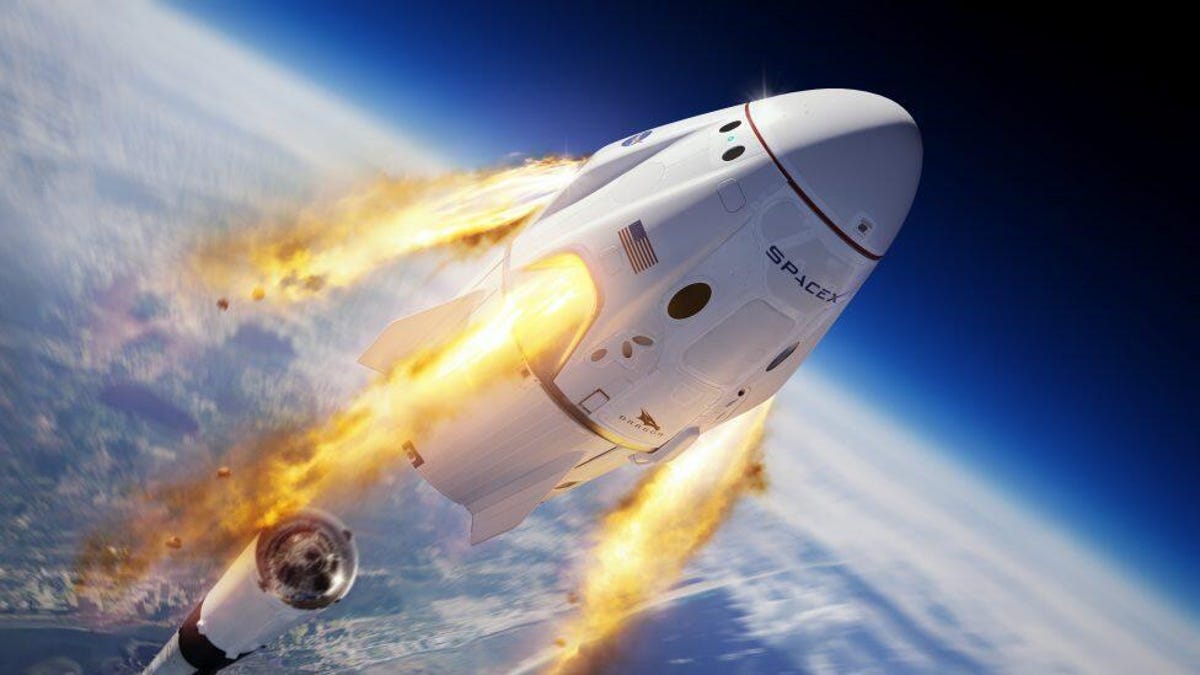SpaceX successfully blows up a Falcon 9 rocket in escape test launch
NASA's Commercial Crew Program can celebrate a big step toward launching astronauts from US soil.
Intentional rocket failure was the goal, and SpaceX hit the mark in spectacular fashion on Sunday. The Crew Dragon in-flight abort test set out to prove astronauts could safely escape in the spacecraft in case of a launch emergency.
SpaceX launched a Falcon 9 rocket with an uncrewed Crew Dragon capsule from Kennedy Space Center in Florida at 7:30 a.m. PT. The Crew Dragon capsule separated from the Falcon 9 about 80 seconds after takeoff, got clear of the rocket, reoriented itself by firing thrusters and then took a parachute ride down to the Atlantic Ocean.
Splashdown of Crew Dragon in the Atlantic Ocean! pic.twitter.com/V1C2Xfd9Mk
— SpaceX (@SpaceX) January 19, 2020
Both NASA and SpaceX livestreamed the event. The used Falcon 9 rocket didn't survive the test intact. SpaceX had expected the Falcon 9 to break up and trigger a fireball of some sort. The rocket delivered on this promise. The entire test appeared to go exactly as planned.
Recovery crews went to work to retrieve the capsule after splashdown and pick up debris from the blown-up rocket. SpaceX said the recovery operation was expected to take a couple hours.
NASA Administrator Jim Bridenstine congratulated SpaceX on a successful test.
Congratulations to the @NASA and @SpaceX team for a successful In-Flight Abort Test! This critical test puts us on the cusp of once again launching American astronauts on American rockets from American soil. Spacecraft recovery operations are underway. pic.twitter.com/5ZzEVesAJW
— Jim Bridenstine (@JimBridenstine) January 19, 2020
SpaceX founder Elon Musk described the demonstration as "picture perfect" in a post-test media conference. "I'm super fired up. This is great," he said.
The test marks a critical milestone in the development of Crew Dragon for NASA's Commercial Crew Program. Both SpaceX and Boeing are working with NASA to launch astronauts from US soil to the International Space Station for the first time since the end of the shuttle era in 2011.
Two dummies went along for the ride. SpaceX and NASA will go through the data gathered during the test. A successful demonstration of the in-flight emergency escape system puts SpaceX on track to launch NASA astronauts sometime this year.
SpaceX already sent an uncrewed mission to the station in early 2019. SpaceX and NASA are now eyeing the second quarter of 2020 for a crewed mission, but that timing depends on further parachute tests and astronaut training needs.
Originally published Jan.19, 8:23 a.m. PT.
Update, 9:48 a.m.: Adds response from Musk and Bridenstine.


